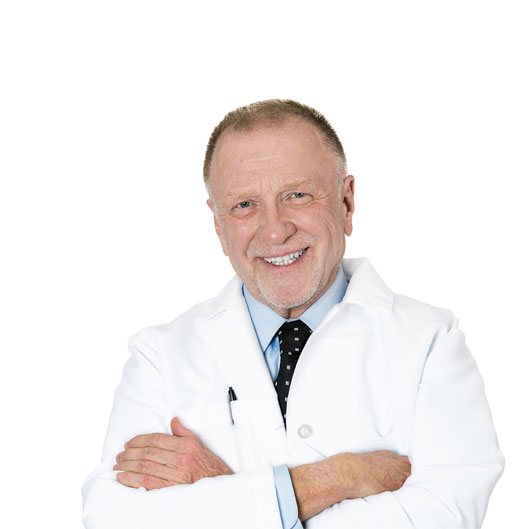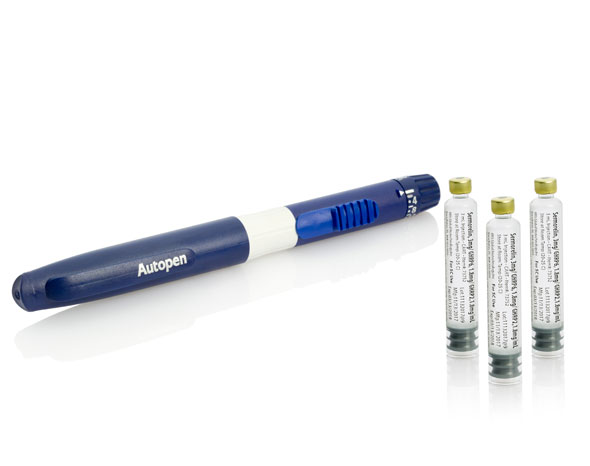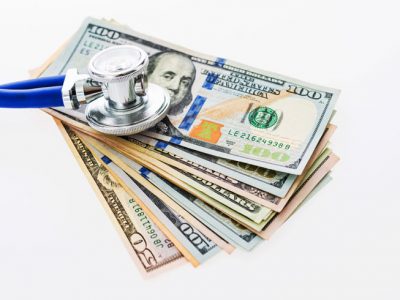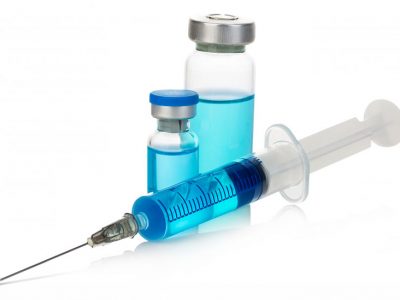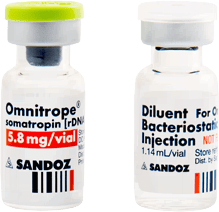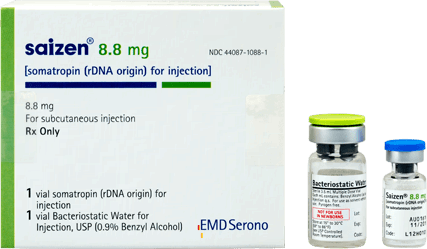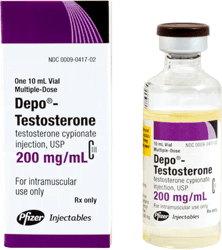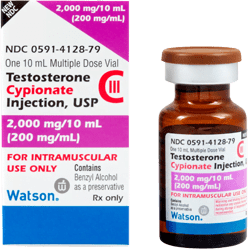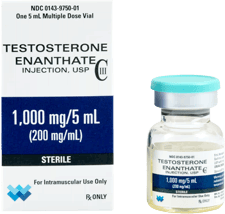- Home
- Growth Hormone
- Growth Hormone
- Growth Hormone Deficiency
- Growth Hormone Therapy
- Growth Hormone Injections
get startedThe Most Effective Hormone Replacement TherapiesThe Many Benefits of Prescription Testosterone Therapy
- There can be many benefits to testosterone replacement for patients with age-related low testosterone.
- Testosterone injections are the most commonly prescribed, and generally speaking, the most effective form of testosterone replacement.
- You can only get genuine testosterone therapy with a doctor’s prescription.
- Any product that claims to be testosterone, or provide you with any kind of testosterone “boosting” effect, that you can get without a prescription,is not true testosterone therapy.
Prescription testosterone therapy has many positive benefits for men who may be suffering from low testosterone. We use the term “prescription testosterone therapy,” purposely, because the only way to obtain real testosterone therapy is with a doctor’s prescription. Any product that claims to be testosterone, or provide you with any kind of testosterone boosting effect, that you can get without a prescription, is not true testosterone therapy.
Prescription testosterone therapy has many life-changing benefits for men who are suffering from low testosterone.
How Do I Know If I Need a Prescription for Testosterone Therapy?
To determine if you need a prescription for testosterone, it is important that you get to know the signs and symptoms of low testosterone. Here are some of the most common signs of low testosterone:
- You feel consistently tired.
- You tend to be depressed, angry and/or irritable.
- You are having more trouble than usual sleeping.
- You are putting on weight more easily, and it is harder to take it off.
- You are experiencing some sexual health issues
If you are experiencing any or all of the above, it is a very good possibility that you could benefit from prescription testosterone therapy.
However, again, that word “prescription” is deliberate and important. If you need testosterone therapy, you need to see a doctor, be tested, and obtain a legal prescription for testosterone. There is no other legitimate way to get testosterone. Any product you see for sale online or anywhere else that claims to be testosterone, if it can be purchased without a prescription, cannot by law, contain actual testosterone.
Prescription testosterone therapy has many life-changing benefits for men who are suffering from low testosterone.
Can Any Doctor Give You Prescription Testosterone Therapy?
Any medical doctor can provide prescription testosterone therapy, as long as he or she has performed the proper testosterone blood tests, and determined that you have low testosterone.
Testosterone is a very critical hormone. Doctors who specialize in hormone imbalances or other hormone based diseases such as diabetes, are known as endocrinologists. These types of doctors are very good at detecting and treating glandular conditions, and diseases of the endocrine system, that can result in some very severe disorders such as: impaired growth in children, diabetes, Graves’ disease, or the impacts of cancer of the major glands such as the pituitary or adrenal glands.
However, if you are over 40, and experiencing the symptoms described above, your low testosterone is probably not related to one of the diseases or conditions that most endocrinologists specialize in treating. Instead, what you are dealing with is the normal drop in testosterone that occurs as you age, and to treat that condition, you are better off seeing a doctor who specializes in prescribing hormone replacement treatments for men with age-related low testosterone.
So, while it is true that any doctor can prescribe prescription testosterone therapy, you really want to be diagnosed and treated by a doctor, or testosterone clinic that has experience in prescribing safe and effective testosterone replacement therapies for men suffering from age-relayed low testosterone.
What Are the Steps to Getting a Prescription for Testosterone Therapy?
In order to get a prescription for testosterone therapy, you must first receive a diagnosis of low testosterone. While there are many products on the market that claim to boost testosterone levels, the only way to achieve real results, is with prescription testosterone therapy.
Before you can leave any doctor’s office with a prescription for testosterone therapy, he or she must have the level of testosterone in your blood tested. If your testosterone blood test indicates that your testosterone levels are lower than they should be for your age and weight, your doctor will be able to provide you with prescription testosterone therapy.
Testosterone therapy can be given in many forms, however, we believe that testosterone injections are the most effective way to receive prescription testosterone therapy. When testosterone is injected directly into the blood stream, it is more readily absorbed, and you receive 100% of the dosage. No medication is lost through digestion or other bodily processes, as can occur using other testosterone therapy delivery methods. This also helps your doctor to more precisely prescribe and monitor your dosage of testosterone, over the course of your low testosterone treatment program, and adjust it as necessary. Basically, there are four steps involved in obtaining a prescription for testosterone therapy:
Step One – Find an experienced doctor or testosterone clinic that you can trust.
Step Two – Have a testosterone blood test, along with a thorough medical examination.
Step Three – Evaluate the results of your lab work, exam, and medical history to determine if you are a candidate for prescription testosterone therapy.
Step Four – Begin your monthly testosterone replacement program per your doctor’s instructions.
How to Choose the Best Provider of Prescription Testosterone Therapy
As you look at the four steps above, it is important to understand that where you get your testosterone prescription from matters. While it is true that any licensed medical doctor can prescribe testosterone, not all prescribers of testosterone therapy are alike.
When looking for a testosterone doctor, or clinic to provide you with prescription testosterone therapy you always want to keep in mind their level of skill and experience. You may want to ask the following questions:
- How long have you been providing testosterone therapy for men?
- Are you doctors board certified, and what other relevant credentials or affiliations do they have?
- What type of hormones do you use?
- What kind of results can I expect from testosterone therapy?
- What kind of track record of success do they have? Ask to see patient testimonials.
- What happens if my testosterone therapy does not work, or I am otherwise unhappy with my treatments?
You will know by the answers to these types of questions, whether they are, or are not, the provider that you wish to get your testosterone prescription from.
Patent care and customer service is something else that you want to consider when finding the best provider of testosterone therapy. We pride ourselves on treating every testosterone therapy as an individual, with unique needs and goals. We are local, as opposed to some large national clinic, so we are here for you whenever you may need follow up visits, or adjustments in your dosage.
We are also highly specialized — we do one thing, and we do it very well, providing hormone replacement therapies so that men and women over 40 can continue to lead active, healthy and productive lives.
When testosterone is injected directly into the blood stream, it is more readily absorbed, and you receive 100% of the dosage. No medication is lost through digestion or other bodily processes, as can occur using other testosterone therapy delivery methods.
read this next
How Much Does it Cost to Treat Low Testosterone?
Testosterone therapy is a clinically proven, safe and effective way to raise the testosterone levels of men who have been diagnosed with low testosterone,…read moreDoctors Who Treat Men With Low Testosterone
If you are a man between the ages of 35 and 65, and are not feeling yourself lately, and if you find that you…read moreWhat are the benefits of Testosterone injections?
There are many ways to prescribe testosterone replacement therapy for men with low testosterone. However, testosterone injections are generally believed to be the safest…read moreHow to get Testosterone injections from your Doctor?
Only a doctor can give you a prescription for testosterone injections; therefore you can only get testosterone injections from your doctor if you have…read more - Growth Hormone Therapy

